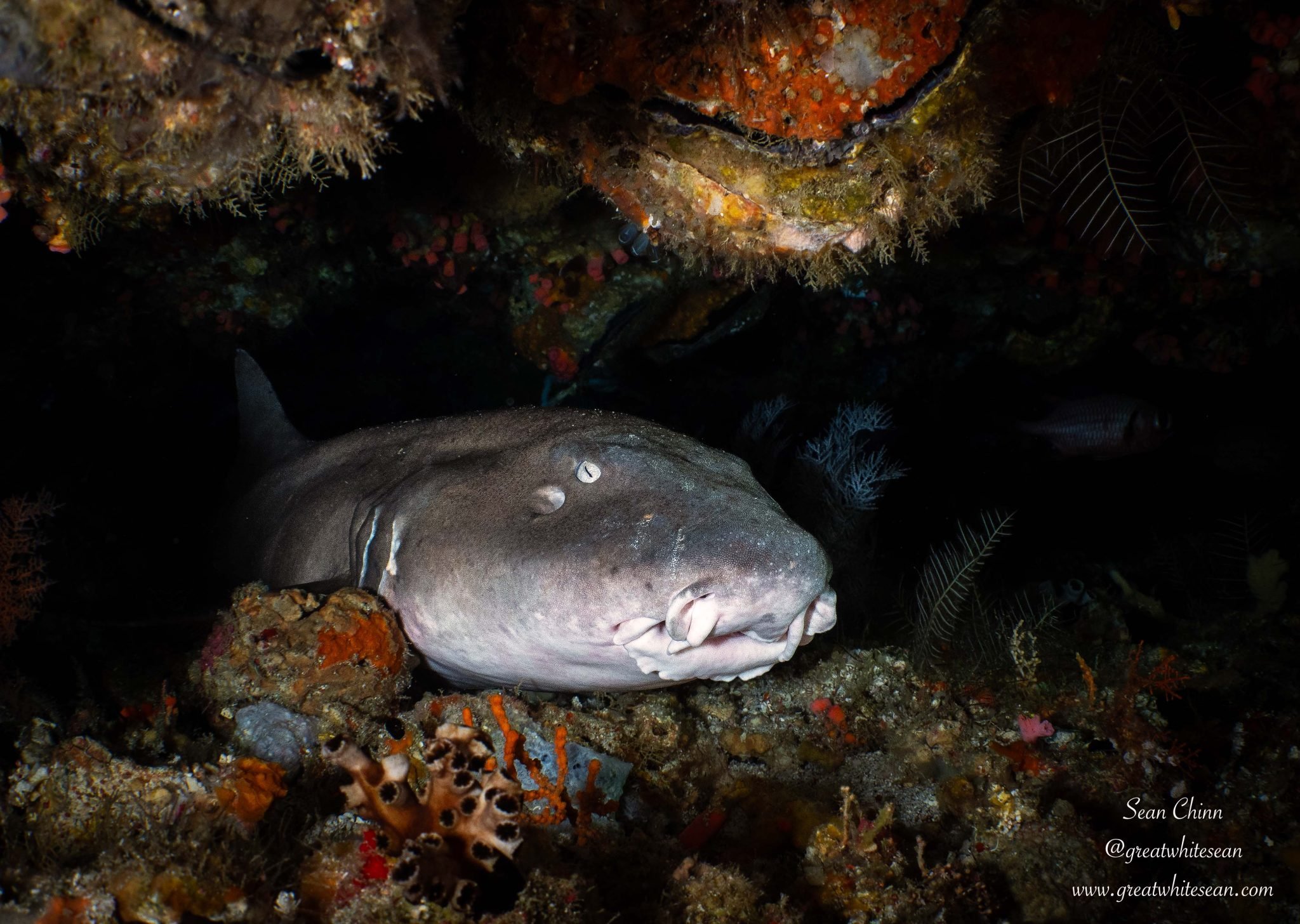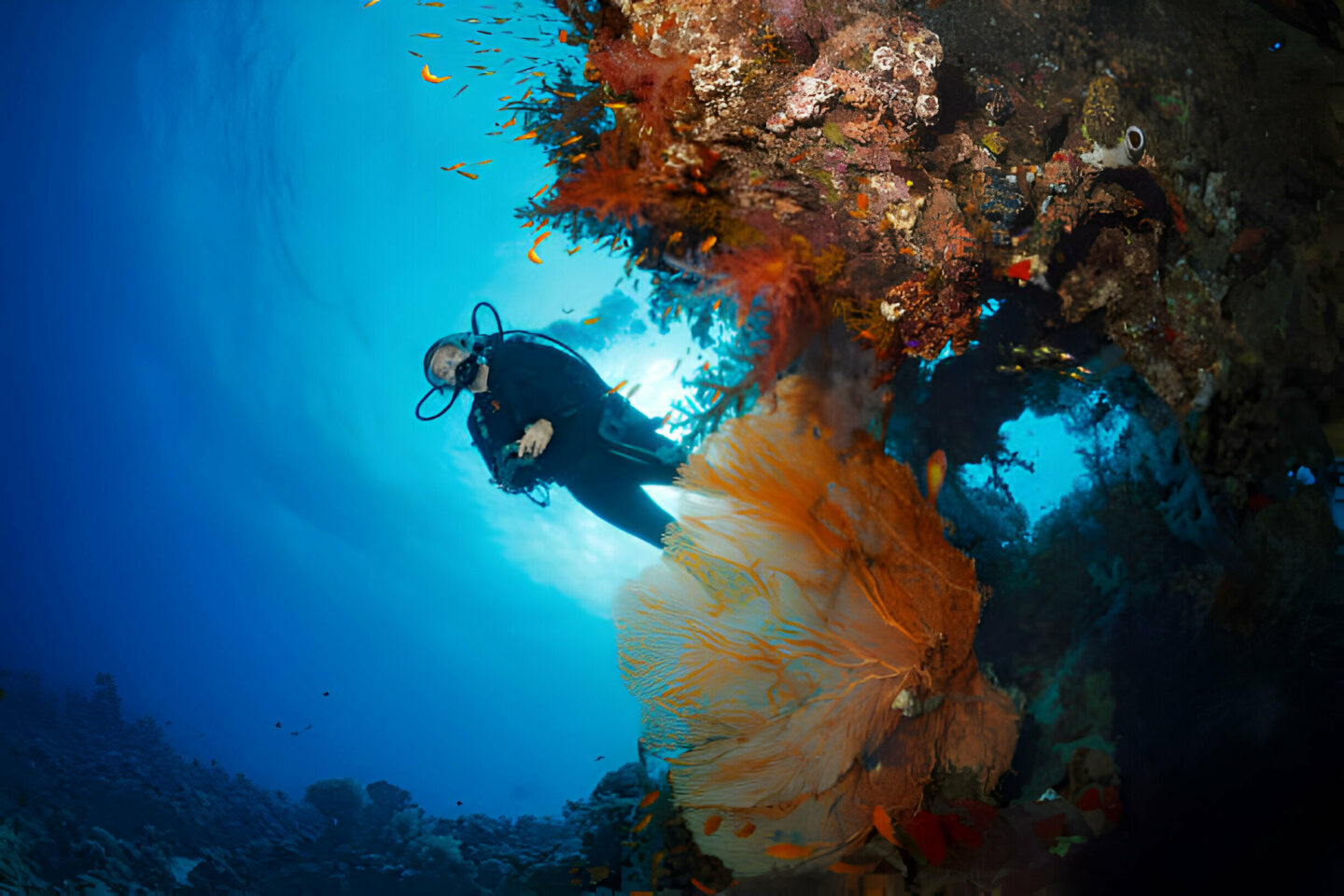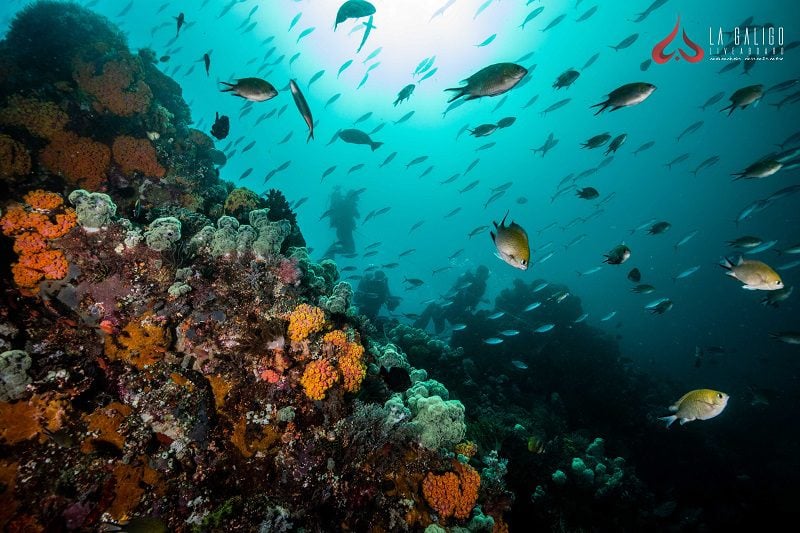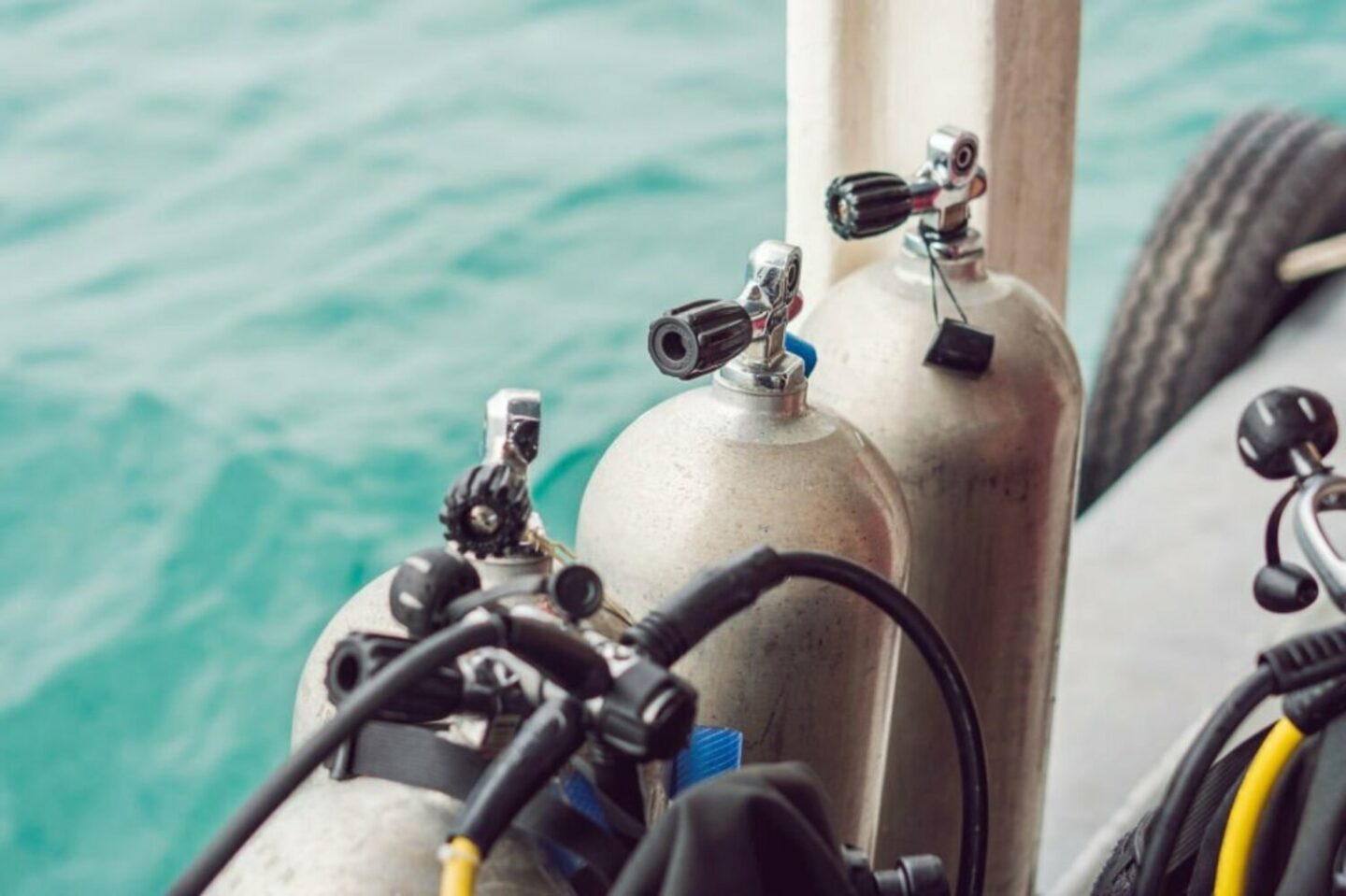Night Diving Tips: Rules, Equipment, Signals, Unique Sealife

Some people love diving at night, while others hate it. Although diving into the underwater world in the dark, with only lights to illuminate your surroundings, might be a unique new experience which you will grow to love.
When diving at night, you will see coral reefs come alive with new critters you couldn’t have even imagine existed while seeing the same reef on a day dive. Maybe you’ll find a shipwreck that looks haunted and deserted but is actually full of living creatures. Diving at night allows you to see your favourite dive sites in a whole new perspective. So read on for all the tips for night diving to see if this exhilarating experience is something that you want to try.
Equipment for Night Diving
There are a few different pieces of equipment you’ll want to bring with you when going night diving. The first piece of equipment you should bring is a dive light. These can take many forms, ranging from a dive light to a flood light. A dive light directs a light beam to a specific location, whereas a flood light casts a weaker light over a larger area. This is also used to signal other divers, the boat, and to see all the marine life below. You simply cannot dive without a dive light; I even recommend bringing a backup, even if it is a cheap one, so you do not miss out on the dive.
The second piece of equipment you’ll need for a night diving is a tank marker, which will help other divers or boats locate you in the water. While this is great to have, it is optional. Chem sticks, tank marker lights, and even strobe lights are popular options here. It can be annoying at times and at certain dive sites due to all the microorganisms flocking to the light at night, but safety comes first when diving.
A quick side note: it is not advised to mark yourself with chemical glow sticks. They are not environmentally friendly, can contaminate the environment if they leak, and are single-use plastic that contributes to marine debris.
A dive compass is another item to consider on a night dive. While many divers use and should carry a dive compass, it is especially important to take one on a night dive. A more important aspect of carrying a dive compass is knowing how to use it properly. Natural features will be more difficult to use to navigate the waters, so a compass and directions will be essential. It will also help to have that compass set when you are on land in the light and set to the direction you are going in the water or where you are meeting the boat.
We recommend that your dive gauges, compass, and other equipment be able to be illuminated at night, whether they glow in the dark or you shine a light on them. Most dive equipment is, but you should always double-check if you are unfamiliar with the equipment.
Surface Marker Buoys (SMBs) are not always carried, but they can be helpful in locating a diver on a night dive. Because it is dark, take out your dive light and shine it up the length of the SMB, making sure it is not connected to you in case it gets caught when the boat approaches.
Another piece of safety equipment to bring is an audio signalling device (usually a whistle on your BCD) or a noise maker. In the event of an emergency or if the boat driver is unable to locate you, this device can be heard from a long distance and aid in your location.
Signal Alterations
While signalling during the day is relatively simple when visibility is good, signalling at night is more difficult because you must face the other diver and adapt your signals to the darkness. When diving at night, you’ll need to modify a few of the signals you’d normally use on a dive. Make sure to direct your flashlight at your hand rather than the diver’s eyes, as they will be unable to see the signal if you bling them.
The “Ok” sign is the most important. This is accomplished at night by moving your dive light in a circle. If you’re underwater with a buddy, you can shine the light on your hand while performing the standard “Ok” symbol.
Another signal to learn is to move the light from side to side to indicate that something is wrong. In general, the speed of movement can help communicate the importance of the issue. When diving, you should take it slowly and avoid making large movements, which could be misinterpreted as a sign of distress.
If you want to draw your buddy’s attention to something underwater, we recommend circling it with your light a few times. Don’t shine the light on the creature; instead, circle around what you want to show your buddy. It blinds them, so they may hide, and other creatures may notice them and move in to eat them.
Because both of you are holding a light, it will be difficult to communicate the amount of air you have to your dive buddy using standard hand signals. You can either modify the signals, such as pointing a light at your hand to make a T for 100 bar, or simply shine a light on your dive gauge to let your buddy know how you’re doing on air.
Get Ready for Night Dives
There are some things you can do to prepare for a night dive. The first step is to revisit the same site (ideally recently) so you’re more familiar with it and understand how to navigate it. If you can’t do that, hiring a local guide who knows the area well is a good investment. They will be aware of the creatures’ normal locations as well as all safety precautions.
The second thing you should do to prepare for a night diving is bring a dive light, preferably two, so that if the first one goes out, you can still signal to your boat. If you’re diving with only one light and it goes out, your dive is over. The second light does not need to be fancy; it simply needs to be adequate.
Diving at dusk makes the whole thing much easier and more comfortable. It is much easier to get in the water and orient yourself as the wildlife changes. On top of that, you almost always get to see a beautiful sunset. It’s a win-win situation. Ideally, you prepare everything as the sun sets and then jump into the water.
You could also try diving at dawn, which is a good option for more remote locations or places that are extremely crowded during the day. Although it may be a little more difficult logistically if you have everything set up the night before and have gone over the dive plan, it is possible to do so safely.
ALSO READ : 9 Different Type of Diving to Know
What Makes Night Diving Unique
Night dives are very different from day dives for several reasons. The first difference between night diving and day diving is that instead of seeing everything in your field of vision, you can only see what your diving torch is pointing at. While this may appear to be a silly trade-off, it actually allows you to focus on the small details and appreciate them more, which may cause you to notice things you would not have noticed otherwise.
Another distinction is that reef life is nocturnal at night. There will be bioluminescence from corals, invertebrates, fish, and other organisms. When an organism undergoes a chemical reaction that produces light, this is referred to as bioluminescence. Depending on where you are, you may be able to summon them by quickly waving your hands. I usually do this at the end of the dive in shallower water and turn off the light so that if anything goes wrong, it is not a problem.
Fish sleeping is another interesting nighttime behaviour you’ll notice! Yes, fish do sleep, which many people were unaware of. Our last dive in Raja Ampat we even saw a turtle asleep on top of a piece of coral. Nocturnal animals emerge at night, allowing you to see a completely different range of marine life than you would otherwise.
A word of caution beware of your surroundings; you can’t see where you’re going, and something that wasn’t there during the day could be there at night and injure you. Sea Urchins appear out of nowhere and begin feeding voraciously on the reef, and while they may injure you, they will not kill you. There is also a few night dive spots in Komodo where some particularly friendly Lionfish like to follow the beam of your dive light.
Another amazing sight is when the Manta Rays emerge to begin feeding on swarms of plankton. The great barracudas are looking for their next meal. Shrimps, crabs, and lobsters all come out to feed, and their eyes stand out in the darkness to make them easy to spot.
Confront Your Fears
People who were afraid of night diving or thought they would never partake in one, change their minds after one or two dives. The enchantment of being underwater at night will assist you in overcoming your fears. It is natural to feel nervous and even scared in the dark; everything is scarier in the dark, including your own home.
If you’re afraid because you can’t see what’s around you, don’t worry. Get two dive lights if the first one fails. These dive lights have a range of up to 200 feet (60 meters). You won’t have any problems if you keep your gaze fixed on your friend’s light.
Another common concern among novice night divers is sharks and other sea creatures. A diver’s chances of a dangerous shark encounter are slim to none. They are in open water at night, when they are more active, and most night dives are on reefs or shallow bottoms. You do not need to be concerned about that.
Last but not least, remember that it is okay if you do not enjoy night diving. If this is a particularly unsettling thought for you, inform the dive guide or your group before the dive. If you don’t like night diving, just give the guide a signal and surface; there are plenty of other options.
ALSO READ: 9 Best Komodo Dive Sites to Visit in 2024
Night Diving Tips
Be Wary
It’s harder to see at night, and corals can hurt or damage you. Be a responsible diver, stay vigilant, and protect the corals and marine life.
Clip Everything You Can
Clip your flashlight and any other gear you can to your BCD on a D-ring or put it in a pocket. If you have a strap for your flashlight, that’s even better; a lot of dive gear is negatively buoyant, which means it will sink if you drop it.
Stay Visible to Your Buddy
This applies to all dives but should be stated. There’s no need to hold hands or stay on top of them, staying in sight of your buddy is simpler than you think.
Don't Blind Everyone and Everything
Don’t shine your dive torch into your buddy’s face or directly it at the fish, it can be dangerous to all involved and is simply impolite.
Don't Drift Dive at Night
This is more for those who have never night dived before or are in an unfamiliar area. It could cause problems with the combination of nighttime restricted vision and a strong current. Night drift diving is a more advanced skill set.
Look Into the Darkness
While most people are looking at the wall or in the sand, take a look out into the blue or black. There are some larger things looking for prey, as well as the occasional cuttlefish bouncing around.
Keep it Shallow
A night dive is usually a shallow and shore dive. You don’t want to be doing a deep dive or exploring new areas at night. Most creatures live in shallower water anyway.
Descend Feet First
Descend feet first and look down, shining your light beneath you to see where you’re going. Don’t go blind and try not to hit the corals.
Keep an Eye on Your Gauges
Check your depth and air pressure throughout the dive. Diving at night can be disorienting, and you may forget to look around.




